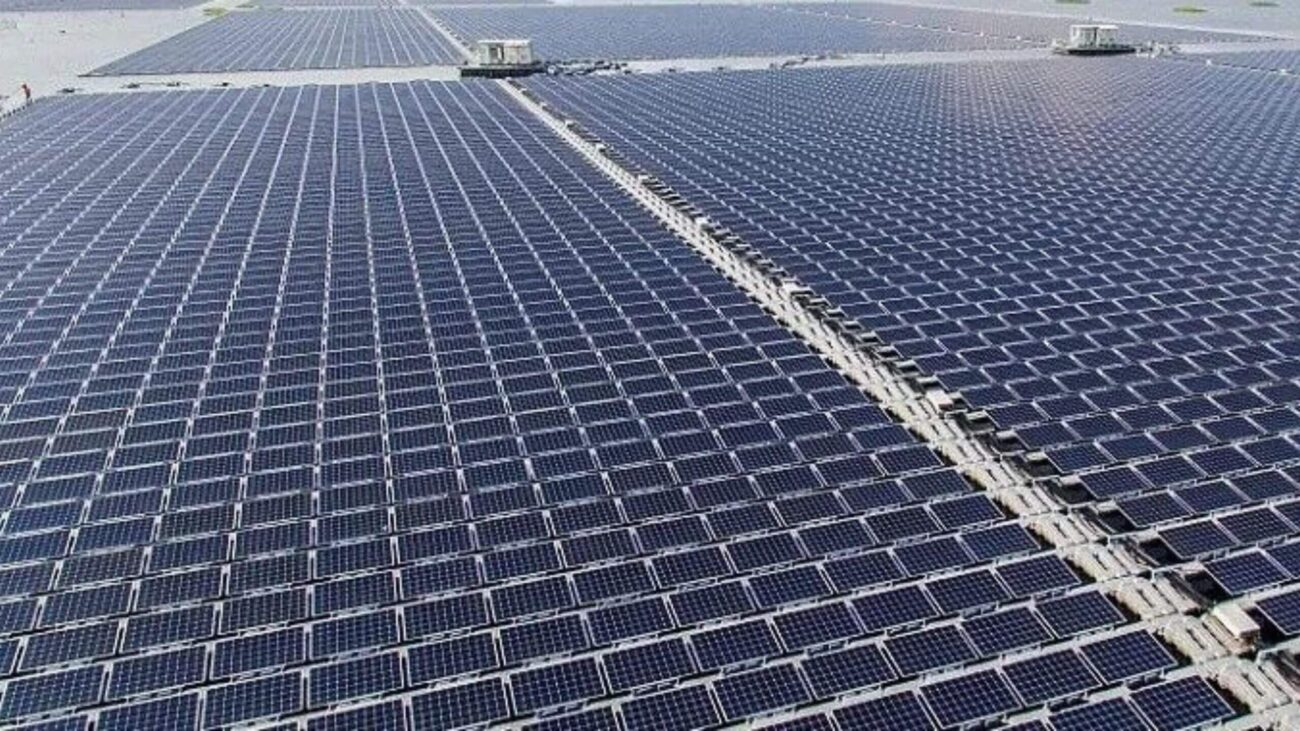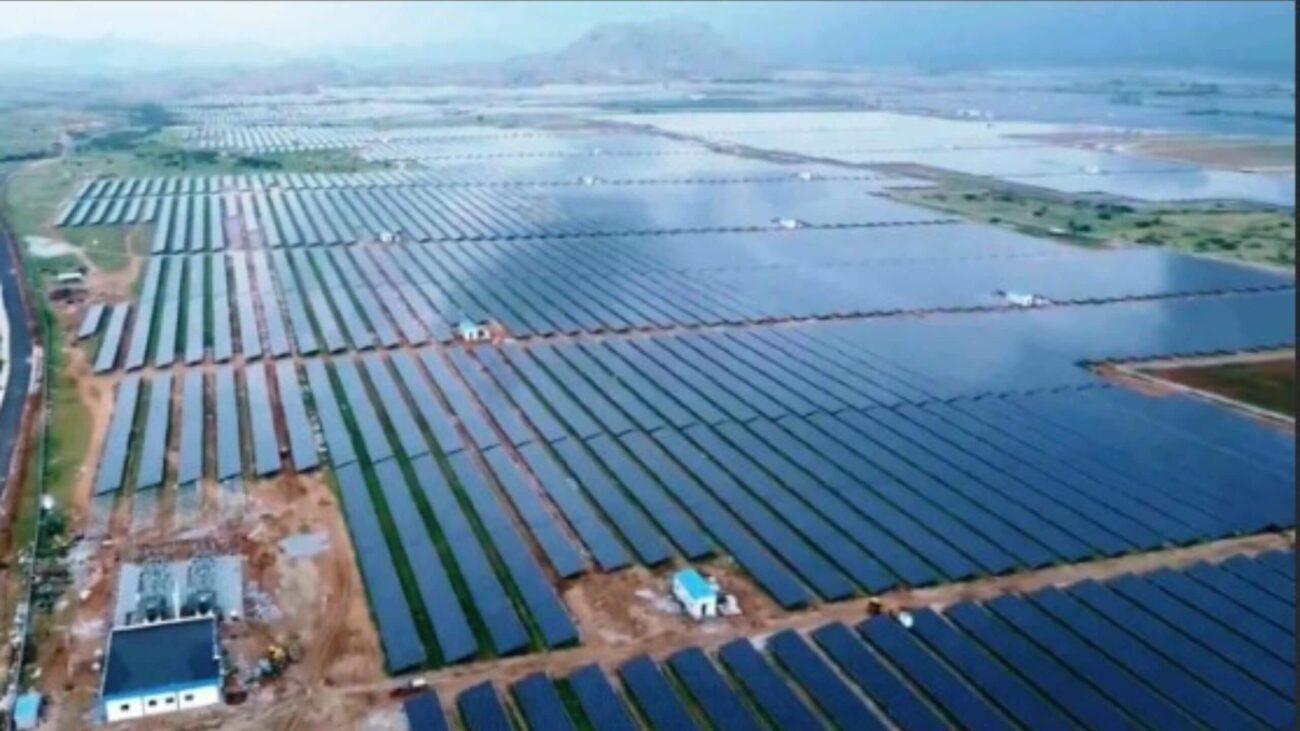Top Largest Solar Power Plants in the World play a crucial role in the global transition towards renewable energy. In this article, we delve into the top five largest solar power plants in the world, exploring their significance, operation, advantages, challenges, and future outlook.
Introduction
Top Largest Solar Power Plants in the World harness sunlight to generate electricity on a massive scale. They utilize photovoltaic panels or concentrated solar power systems to convert sunlight into usable energy. These plants are pivotal in reducing dependence on fossil fuels and mitigating climate change.
In This Post
1. What Are Solar Power Plants in the World?
Solar power plants are facilities equipped with solar panels or mirrors that capture sunlight and convert it into electricity. They consist of arrays of solar modules arranged strategically to maximize sunlight exposure and energy production.
2. Importance of Solar Power Plants
Solar power plants offer numerous benefits, including:
- Clean Energy: They produce electricity without emitting greenhouse gases or pollutants, contributing to cleaner air and a healthier environment.
- Renewable Resource: Sunlight is abundant and inexhaustible, making solar energy a sustainable alternative to finite fossil fuels.
- Energy Independence: Solar power reduces reliance on imported fossil fuels, enhancing energy security for countries.
- Job Creation: The solar industry creates jobs in manufacturing, installation, maintenance, and research, fostering economic growth.
3. Top 5 Largest Solar Power Plants
3.1. Tengger Desert Solar Park, China
Located in China’s Ningxia province, Tengger Desert Solar Park covers an area of over 1,200 square kilometers. With a capacity of 1,547 megawatts (MW), it is one of the largest solar installations globally.

3.2. Bhadla Solar Park, India
Bhadla Solar Park, situated in the Indian state of Rajasthan, spans approximately 14,000 acres. It has a total capacity of 2,245 MW, making it one of the largest solar projects in India.
3.3. Pavagada Solar Park, India
Pavagada Solar Park, also located in Karnataka, India, covers an area of 13,000 acres. With a capacity of 2,050 MW, it is one of the world’s largest solar parks.

3.4. Noor Abu Dhabi Solar Park, UAE
Noor Abu Dhabi Solar Park, situated in the United Arab Emirates, boasts a capacity of 1,177 MW. It spans an area of 8 square kilometers and comprises over 3.2 million solar panels.

3.5. Kamuthi Solar Power Project, India
Kamuthi Solar Power Project, located in Tamil Nadu, India, is one of the largest single-location solar power plants globally. It has a capacity of 648 MW and covers an area of 2,500 acres.
4. How Do These Solar Power Plants Work?
These solar power plants utilize photovoltaic technology to convert sunlight into electricity. Solar panels comprise silicon cells that absorb sunlight and generate direct current (DC), which is then converted into alternating current (AC) using inverters for distribution.
5. Advantages of Large-Scale Solar Power Plants
- Scalability: Large-scale solar plants can be expanded to meet growing energy demands.
- Low Operating Costs: Once installed, solar power plants have minimal operating and maintenance expenses.
- Grid Stability: Solar power contributes to grid stability by diversifying energy sources and reducing dependence on conventional power plants.
6. Challenges Faced by Large-Scale Solar Power Plants
- Intermittency: Solar power generation is dependent on sunlight availability, leading to intermittency issues.
- Land Requirement: Large-scale solar projects require vast land areas, raising concerns about land use and environmental impact.
- Storage Needs: Addressing the intermittency challenge requires efficient energy storage solutions.
7. Future Prospects and Innovations
The future of Top Largest Solar Power Plants in the World lies in advancements in technology, energy storage, and grid integration. Innovations such as bifacial solar panels, solar tracking systems, and grid-scale battery storage promise to enhance efficiency and reliability.
8. Environmental Impact
Top Largest Solar Power Plants in the World have a relatively low environmental impact compared to traditional fossil fuel-based power plants. They produce no greenhouse gas emissions during operation, helping to mitigate climate change and reduce air pollution. Additionally, solar energy does not require water for electricity generation, unlike coal or nuclear power plants, conserving valuable freshwater resources.
9. Economic Benefits
The deployment of large-scale solar power plants can stimulate economic growth and create job opportunities in various sectors. Solar projects require a skilled workforce for installation, maintenance, and operation, leading to job creation in local communities. Moreover, solar power generation reduces reliance on imported fossil fuels, enhancing energy security and reducing vulnerability to volatile fuel prices.
10. Social Considerations
The development of Top Largest Solar Power Plants in the World must consider social factors such as land use, community engagement, and equitable distribution of benefits. Transparent stakeholder engagement and consultation processes are essential to address concerns related to land acquisition, environmental conservation, and social impacts. Additionally, ensuring that local communities benefit from solar projects through job creation, revenue generation, and infrastructure development fosters social acceptance and support.
11. Policy and Regulatory Framework
Government policies and regulatory frameworks play a crucial role in promoting the deployment of Top Largest Solar Power Plants in the World. Incentives such as tax credits, feed-in tariffs, and renewable energy mandates encourage investment in solar projects and drive market growth. Additionally, clear and stable regulatory frameworks provide certainty for investors and developers, facilitating project financing and implementation.
12. Technological Advancements
Continuous innovation and technological advancements are driving improvements in solar power plant efficiency, reliability, and cost-effectiveness. Emerging technologies such as concentrated solar power (CSP), floating solar photovoltaic (PV) systems, and solar tracking systems enhance energy capture and maximize output. Moreover, research and development efforts focus on enhancing energy storage solutions, grid integration capabilities, and materials science to further optimize Top Largest Solar Power Plants in the World generation.
13. Global Expansion
The deployment of Top Largest Solar Power Plants in the World is witnessing rapid global expansion, driven by declining costs, supportive policies, and increasing environmental awareness. Countries around the world are scaling up their solar energy capacity to meet growing electricity demand, reduce carbon emissions, and achieve energy security goals. Solar-rich regions with favorable irradiation levels, such as deserts and tropical areas, offer significant potential for large-scale solar development.
Conclusion
Top Largest Solar Power Plants in the World represent a cornerstone of the transition towards a sustainable and low-carbon energy future. With advancements in technology, favorable policies, and increasing global adoption, solar energy is poised to play a pivotal role in decarbonizing the power sector and mitigating climate change. By harnessing the power of the sun, we can unlock clean, renewable energy sources to power our world for generations to come.
FAQs
How long do solar power plants last?
Top Largest Solar Power Plants in the World typically last 25 to 30 years with proper maintenance. While panels may operate beyond warranty, efficiency may decline. Factors affecting lifespan include quality of components, maintenance, and environmental conditions. Regular inspection and upkeep are essential for optimal performance and longevity.
What happens to solar panels at the end of their lifespan?
At the end of their lifespan, solar panels undergo decommissioning, involving dismantling and recycling. Components like glass, aluminum, and silicon are recycled to manufacture new panels. Proper disposal prevents environmental harm and maximizes resource utilization, promoting sustainability in the solar industry.
Are solar power plants vulnerable to extreme weather events?
Top Largest Solar Power Plants in the World can be vulnerable to extreme weather events like hurricanes, tornadoes, and severe storms. While modern designs incorporate resilience measures, such as sturdy construction and predictive technology, intense weather can still cause damage, impacting energy production. Regular maintenance and monitoring help mitigate risks and ensure optimal performance.
Can solar power plants operate off-grid?
Top Largest Solar Power Plants in the World typically operate on the grid, feeding electricity directly into the utility network. However, with advancements in technology, off-grid solar power plants are becoming feasible. Off-grid systems utilize batteries to store excess energy for use when the sun isn’t shining. While off-grid operation offers independence, it requires careful planning to meet energy demands consistently.
What role do solar power plants play in energy transition?
Top Largest Solar Power Plants in the World play a crucial role in the global energy transition towards renewable sources. By harnessing sunlight to generate electricity, these plants reduce reliance on fossil fuels, mitigating climate change and environmental degradation. Additionally, solar power plants contribute to energy diversification, enhancing energy security and promoting sustainable development worldwide.
